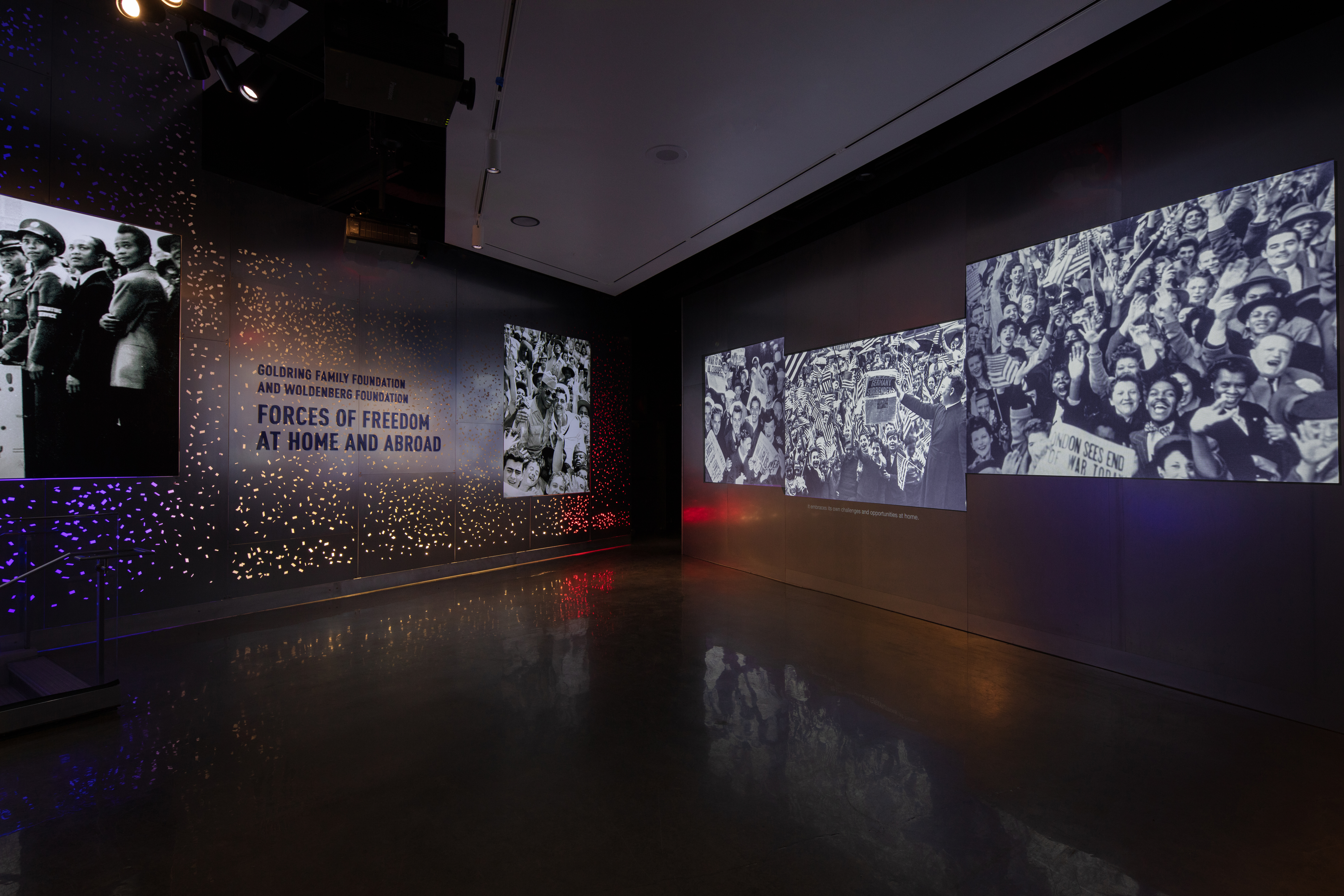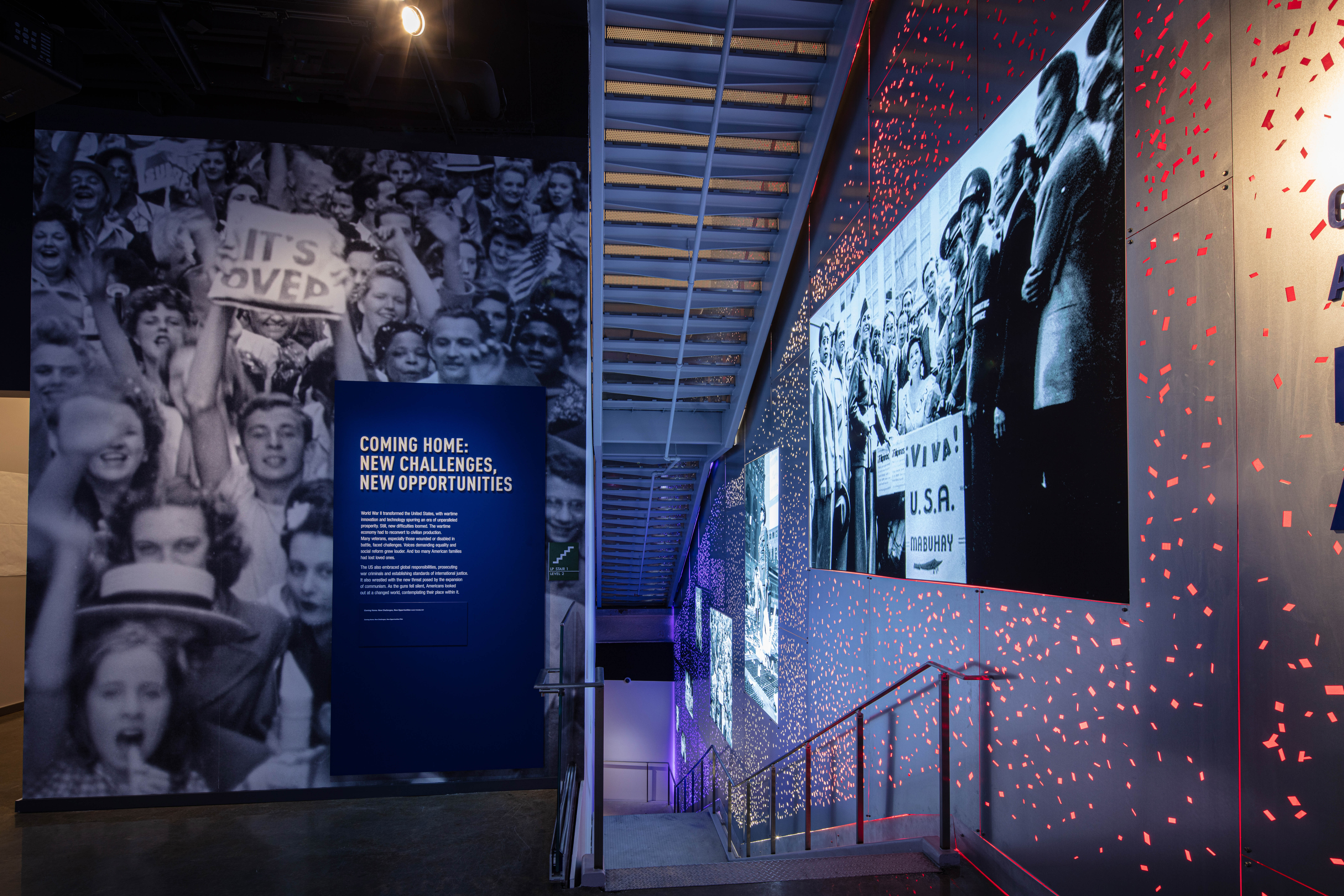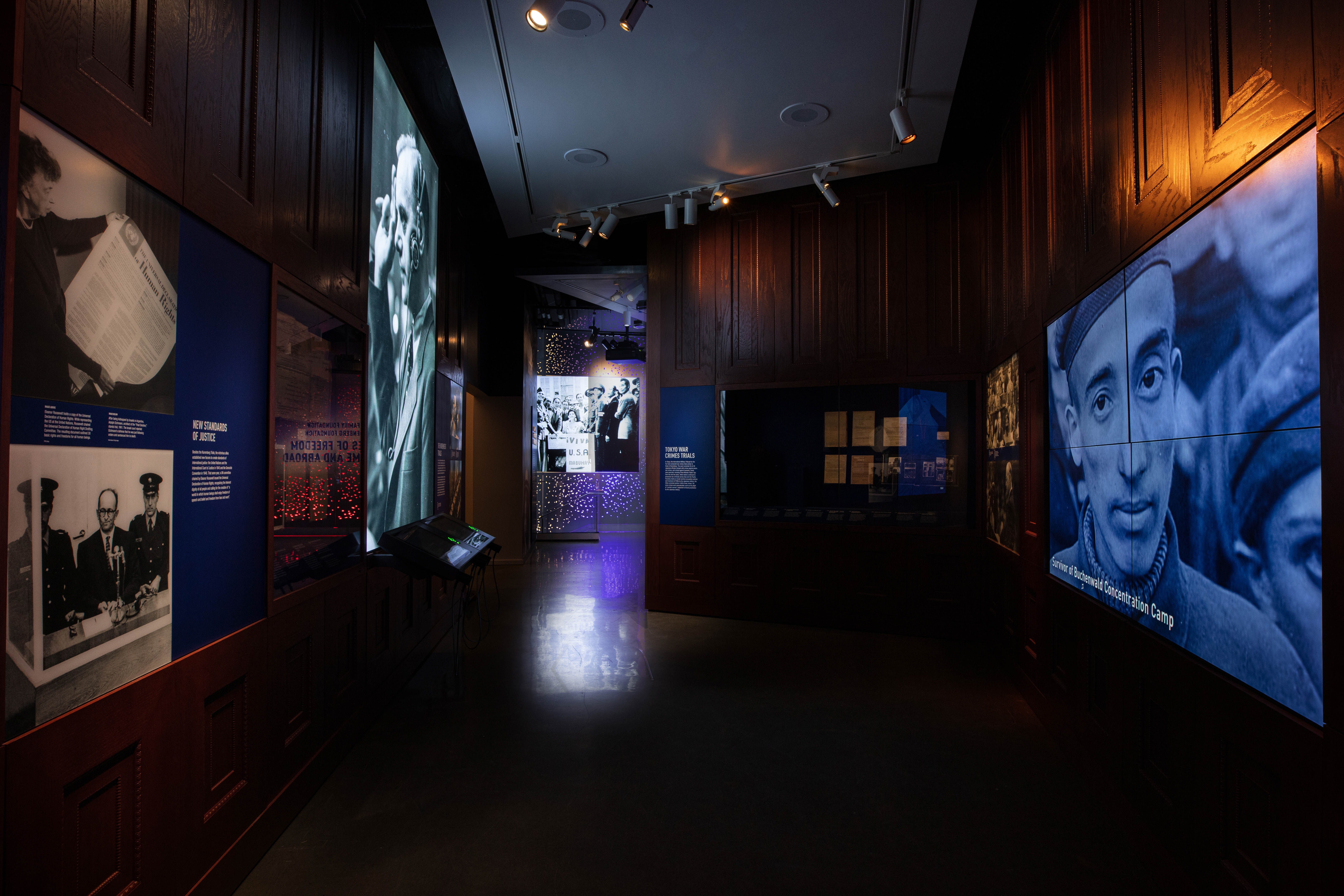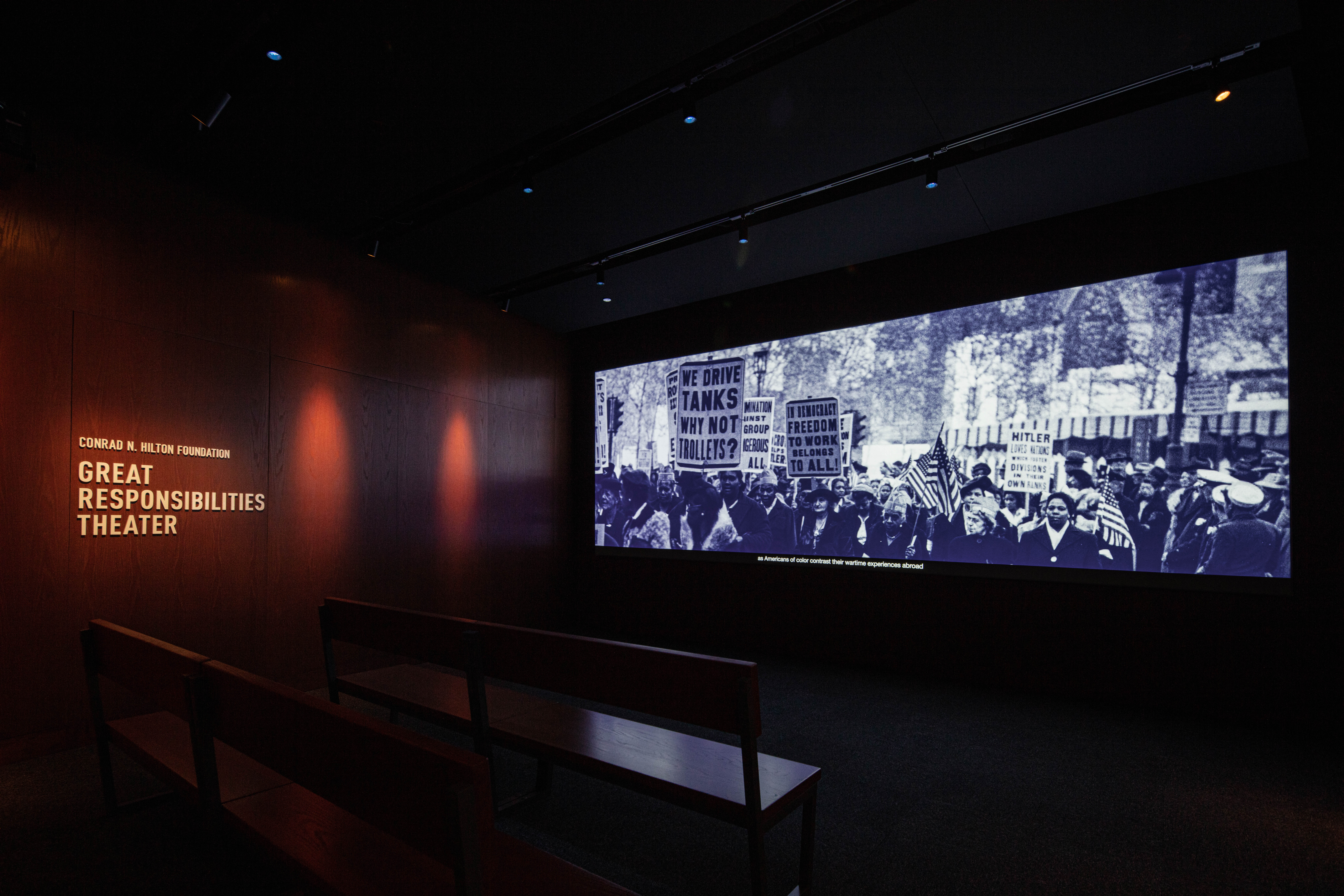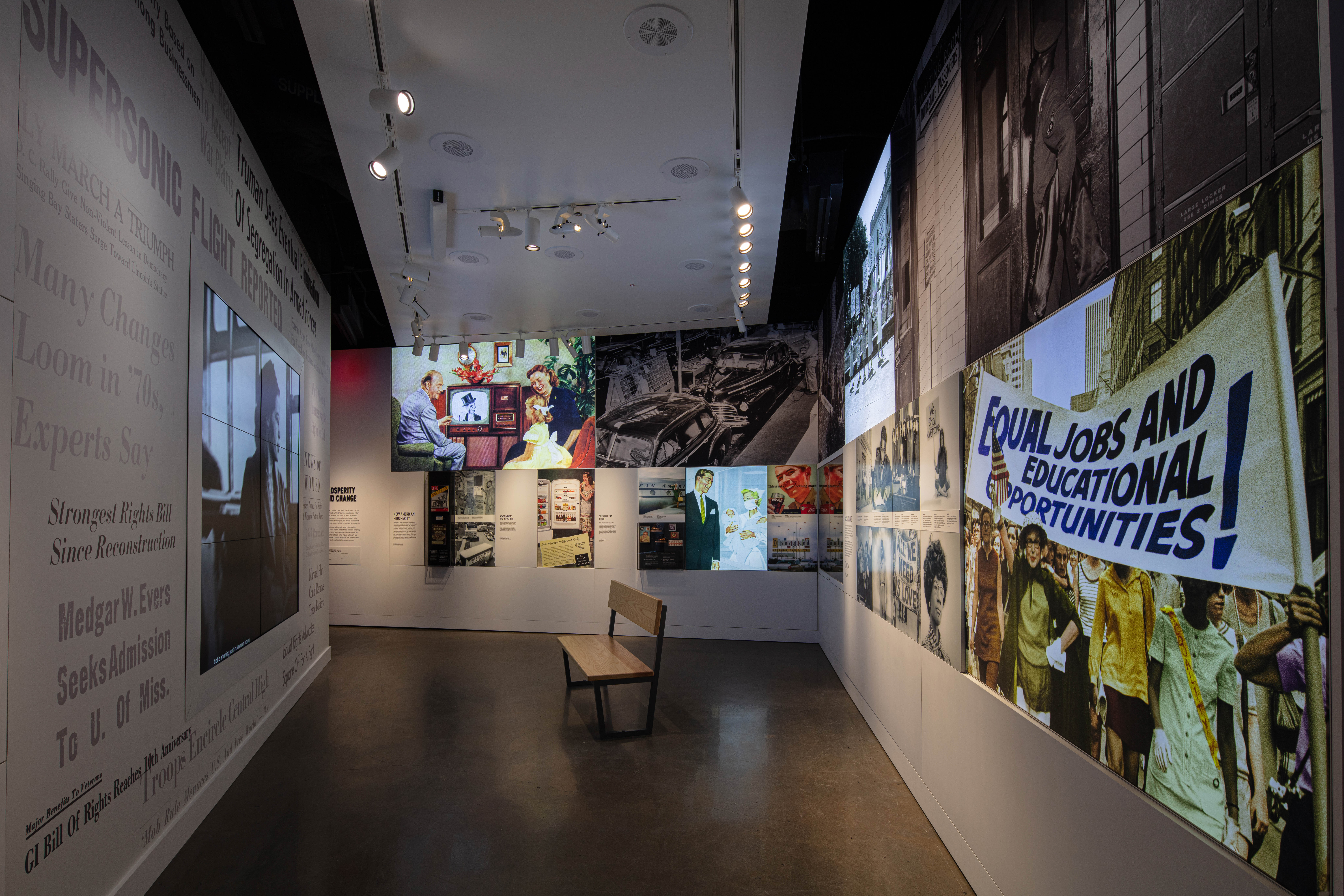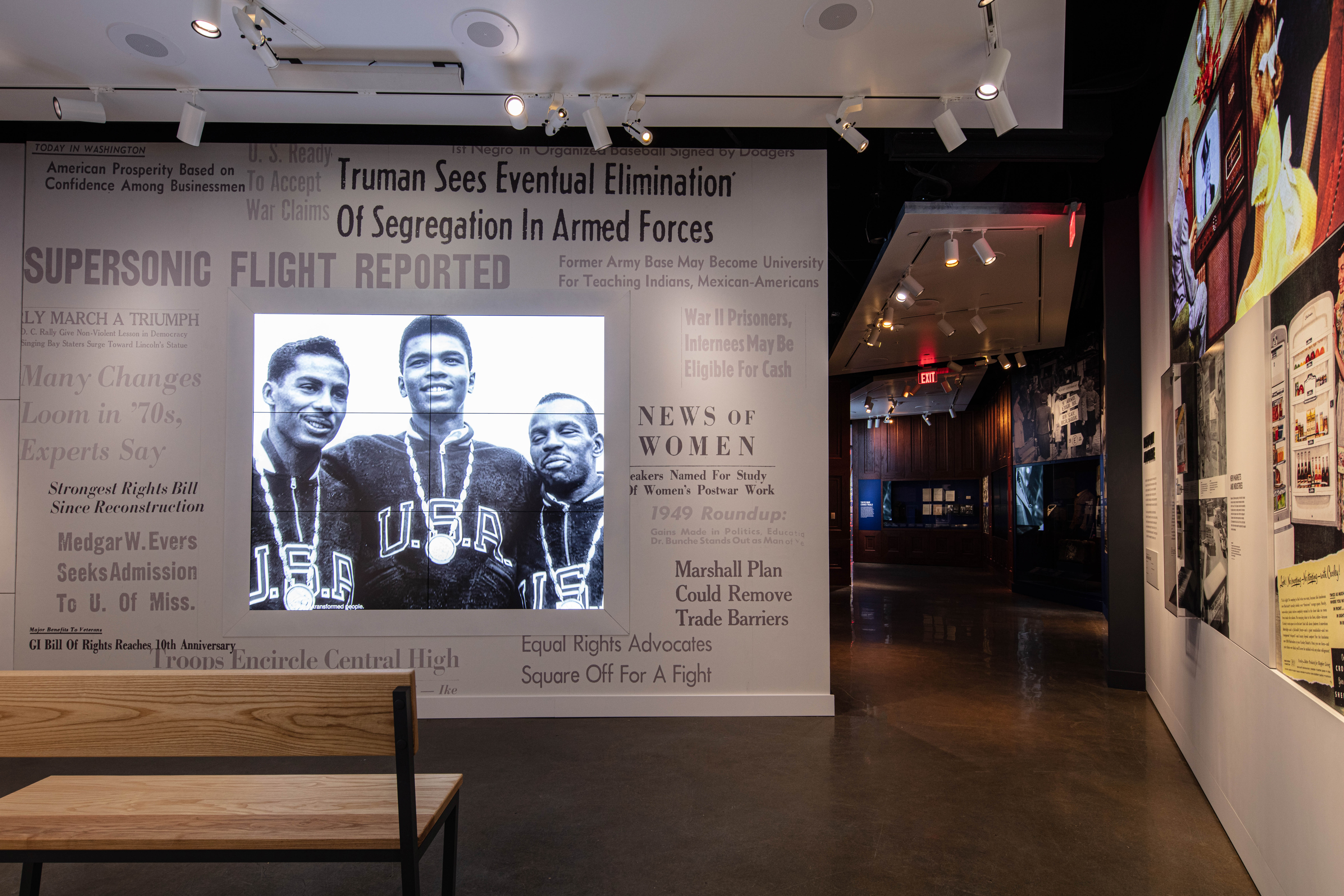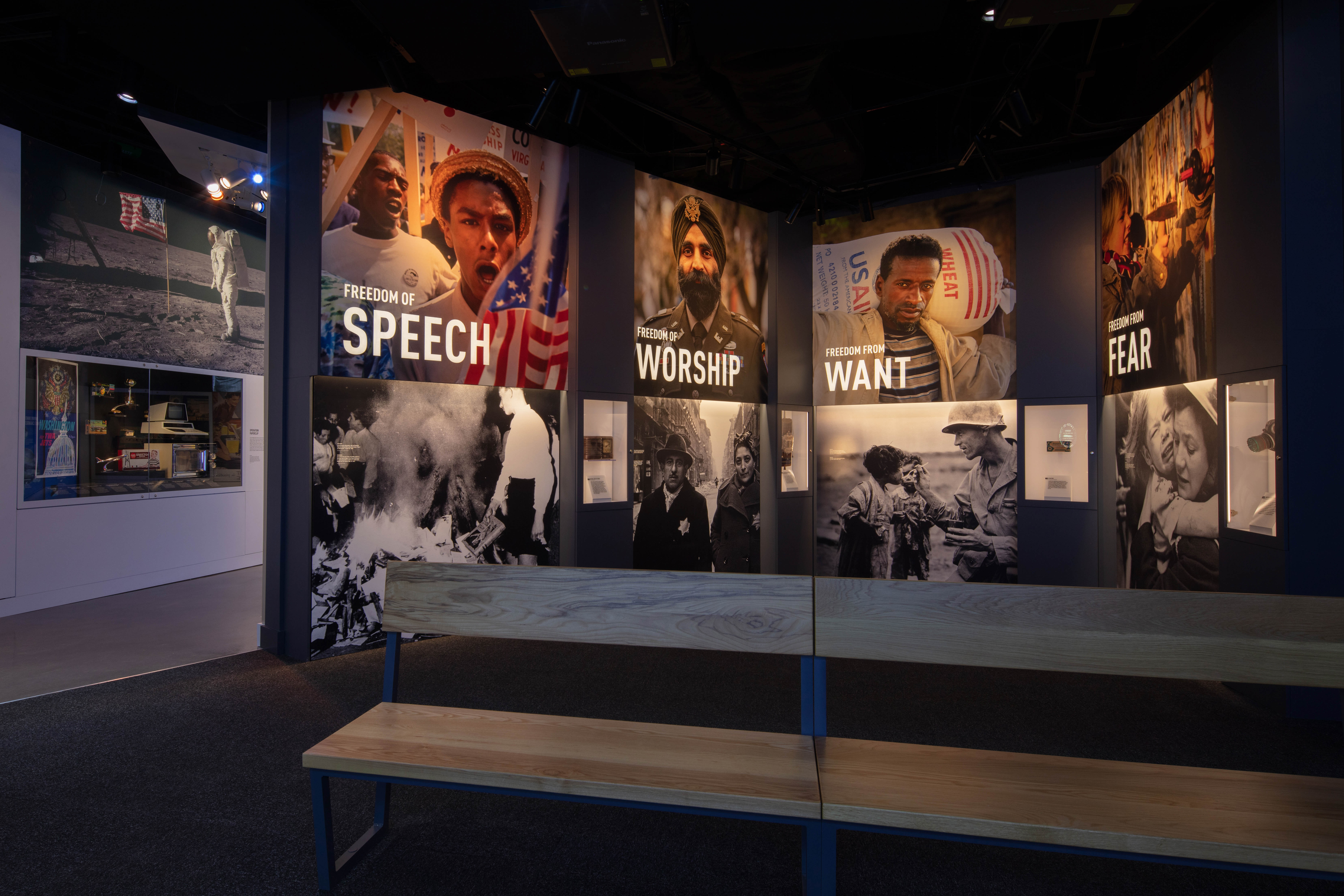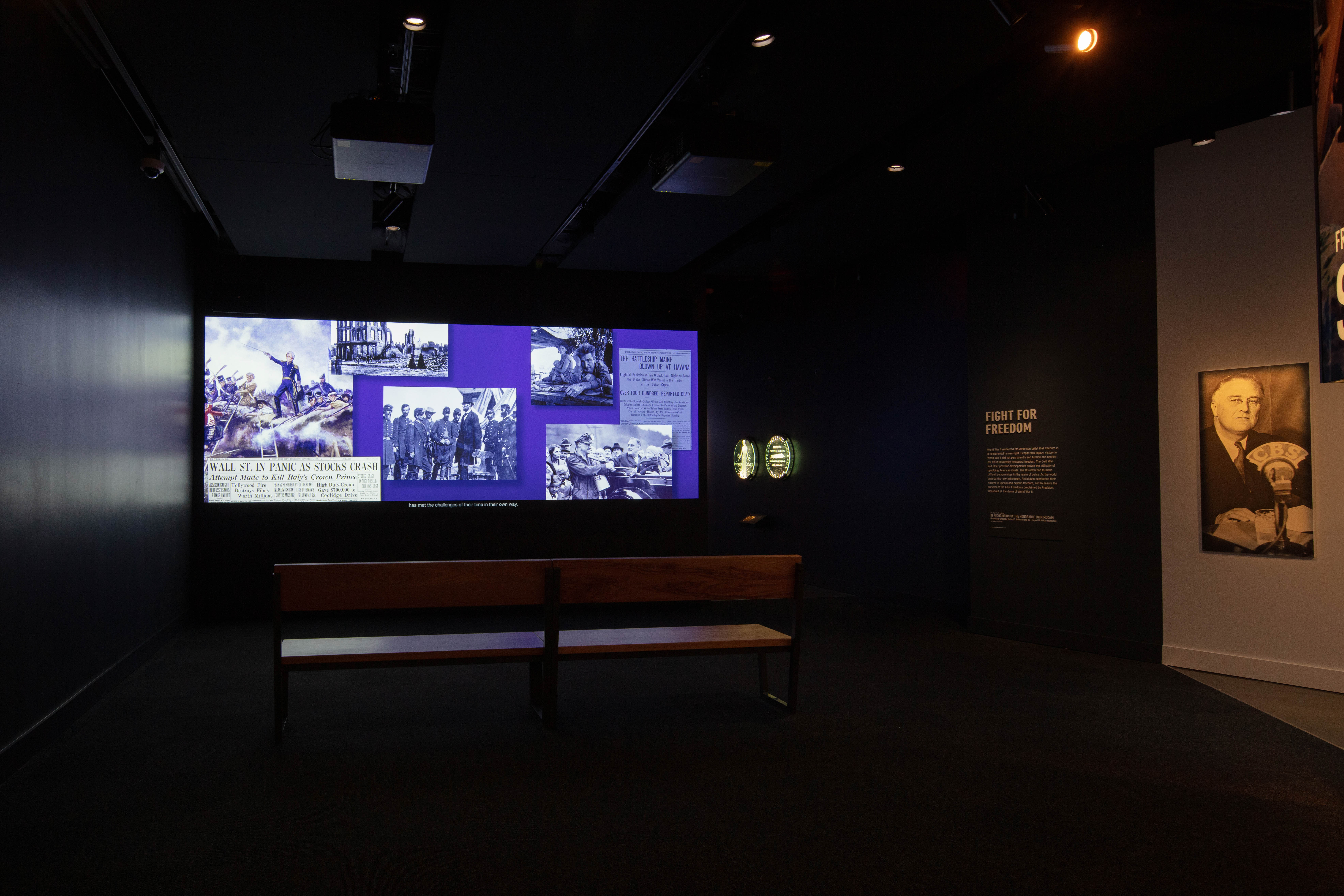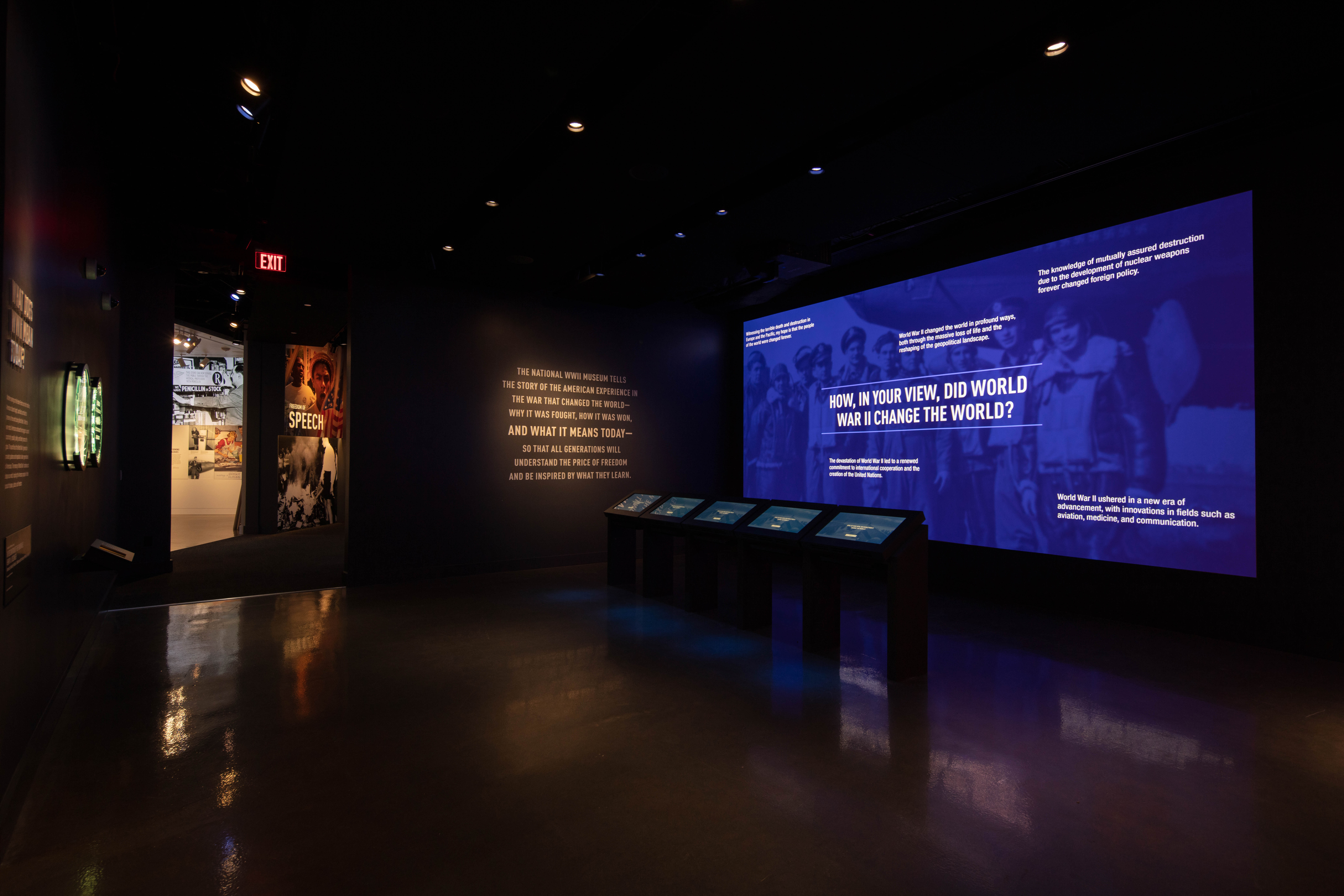FORCES OF FREEDOM AT HOME AND ABROAD: 1945–PRESENT
The second floor of Liberation Pavilion, The Goldring Family Foundation and Woldenberg Foundation Forces of Freedom at Home and Abroad (1945–Present), explores the war’s impact in the postwar period and its lasting legacies today. Exhibits examine the rebuilding efforts of a world destroyed, the war crimes trials, the emergence of the US as a world “superpower,” movements for social change and civil rights, new technological innovations, and the war’s impact on foreign policy.
Made possible through a gift from The Goldring Family Foundation and Woldenberg Foundation
World War II transformed the United States, with wartime innovation and technology spurring an era of unparalleled prosperity. Still, new difficulties loomed. The wartime economy had to convert back to civilian production. Many veterans faced challenges. As Americans enjoyed their new prosperity, voices demanding equality and social reform grew louder. The US also embraced global responsibilities, prosecuting war criminals and establishing standards of international justice. It also wrestled with the new threat posed by the expansion of communism. Guided by the Four Freedoms, Americans looked out at a changed world, contemplating their place within it.
As early as 1942, the Allies vowed to hold Japanese and German leaders accountable for their war crimes. Stunned by the breadth of atrocities they discovered, including the mass murder of civilians and brutal treatment of prisoners of war, the Allied nations made good on their promises for justice when the war ended. In the first ever international trials of war criminals, they prosecuted thousands of German and Japanese defendants accused of crimes against peace, war crimes, and crimes against humanity.
Made possible through a gift from The Joe W. and Dorothy Dorsett Brown Foundation in honor of D. Paul Spencer
Building on the themes in Restoring Justice and introducing the themes of the next two galleries, this theater features a film that illuminates the new position the United States held as a world “superpower” during the postwar period of 1945–1950, a status based on its vibrant economy and its monopoly on nuclear weapons. The film also connects visitors to the tensions felt at the start of the Cold War, as the threats of communism and catastrophic global warfare loomed and the survival of democracy was uncertain.
Made possible through a gift from Conrad N. Hilton Foundation
World War II created a new global role for America as the “leader of the Free World.” Wartime innovation and military production propelled the United States into an era of unparalleled economic prosperity, creating the richest society in the world. Scientific, technological, and medical advancements created new opportunities in civilian life that also sparked dramatic social change. While the 1950s seemed to be a time of calm and conformity, dramatic changes were underway, as servicemembers of color and women demanded equal rights. The changes begun by World War II reverberated for decades to come.
Made possible through a gift from Jennifer and Phil Satre
As a lasting legacy of World War II, Americans believe that freedom is a fundamental human right. Victory in World War II did not permanently end turmoil and conflict, however, nor did it universally safeguard freedom. The Cold War and other postwar developments proved the difficulty of upholding American ideals. The United States often had to make difficult compromises in the realm of foreign policy. As the world entered the new millennium, Americans maintained their resolve to uphold and expand freedom, and to ensure the survival of the Four Freedoms proclaimed by President Roosevelt at the dawn of World War II.
Made possible through a gift in recognition of The Honorable John McCain, generously funded by Richard C. Adkerson & Freeport-McMoRan Foundation
Whether serving on the Home Front or on the frontlines, American citizens fought, sacrificed, and died to preserve a free world during World War II. After the war ended, Americans continued the struggle to uphold opportunity, equality, safety, and liberty across the globe. The sacrifices of the WWII generation provide guidance and inspiration for Americans to this day. The memory of World War II continues to shape our world, inspiring the American people in their pursuit of peace, justice and freedom.
This interactive gallery provides a reflective space for visitors to voice their thoughts on the war’s legacy and what it means today, allowing them to use a digital kiosk to answer questions on the meaning of the war and see their responses appear on a large screen alongside comments from other guests.
Made possible through a gift in recognition of The Honorable Henry A. Kissinger, generously funded by Richard C. Adkerson & Freeport-McMoRan Foundation
Rising between Liberation Pavilion and Campaigns of Courage pavilion, this prominent outdoor space features benches and greenery, making it a perfect space for visitors to relax and gather. The terrace is home to a Gold Star Families Memorial Monument, honoring not only the ultimate sacrifice of the fallen but also the enduring sacrifices of their families and loved ones—stories that are reflected across the Museum’s campus and especially in Liberation Pavilion. The Monument was made possible thanks to the Woody Williams Foundation, which has established these monuments in all 50 states and US territories.
Made possible through a gift from Judith W. and Louis M. Freeman
